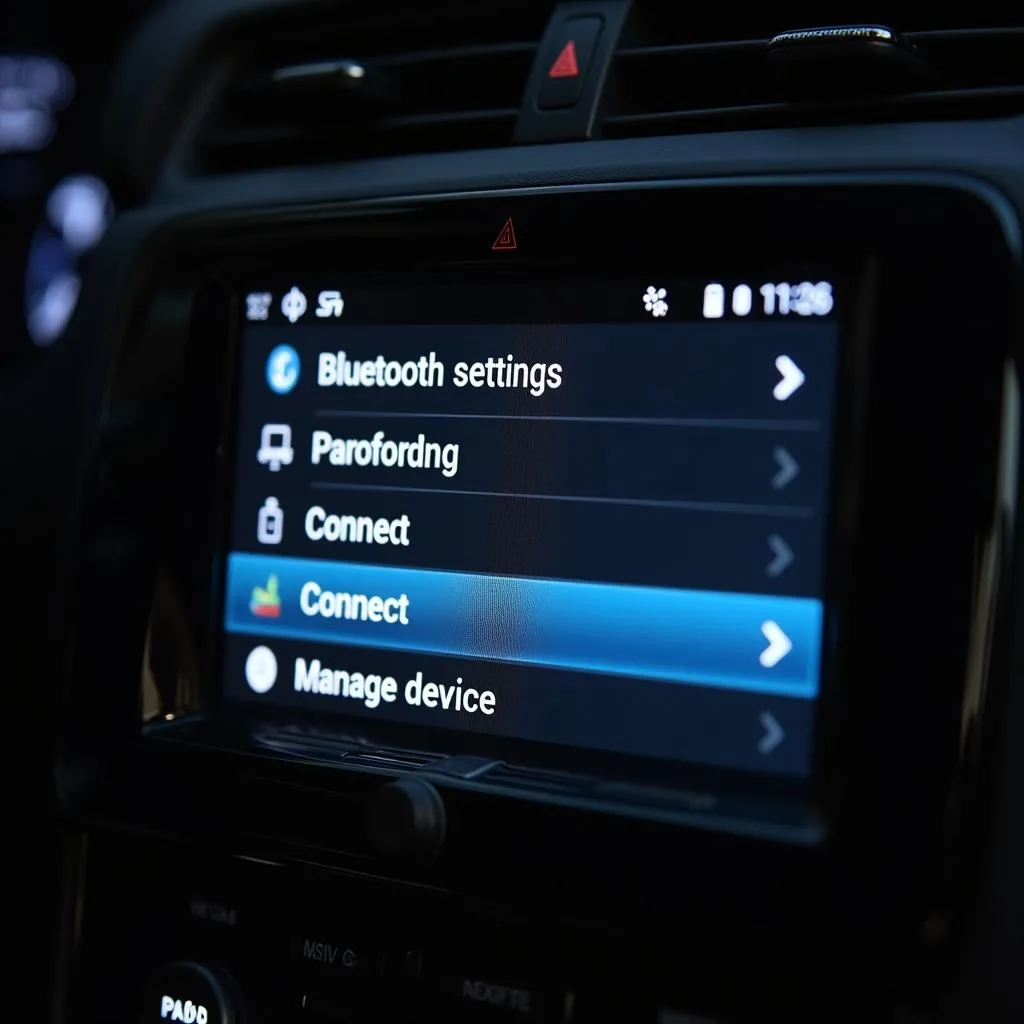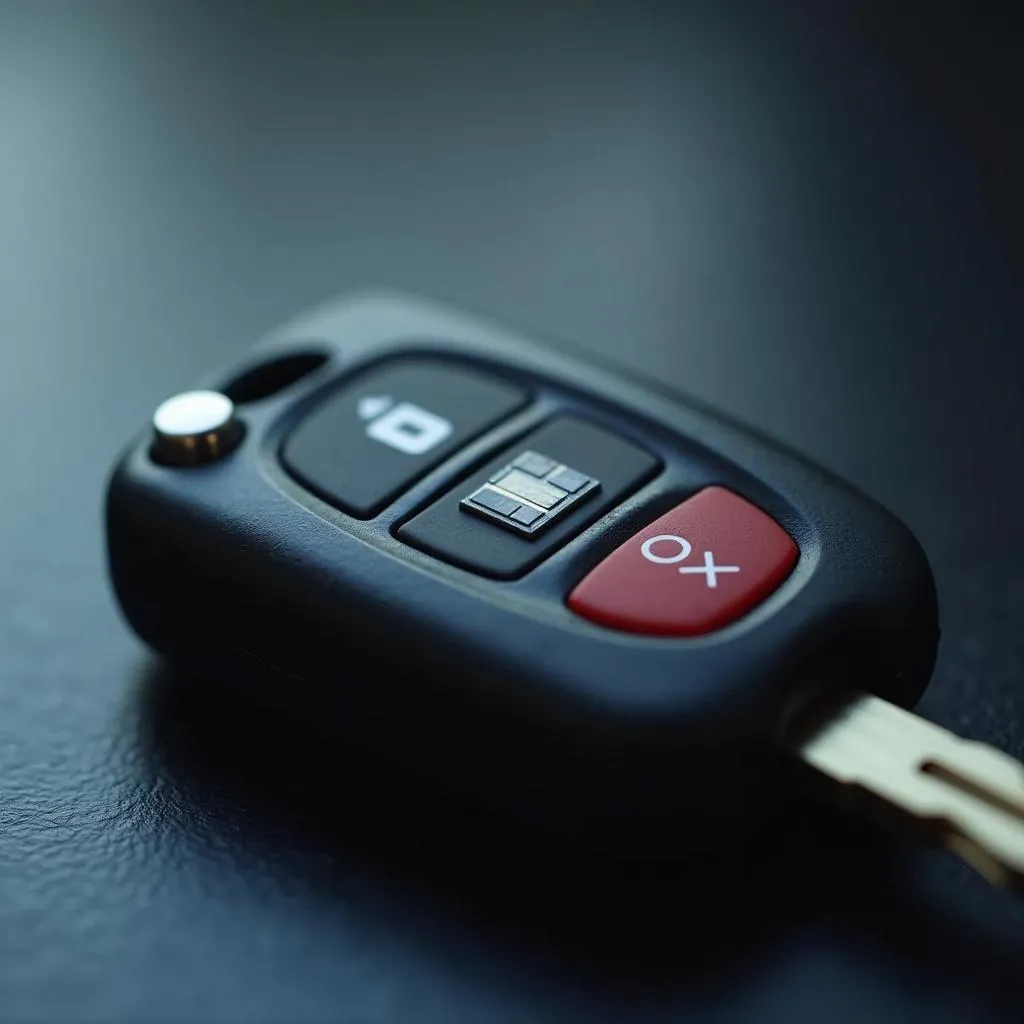Tired of listening to the same old radio stations or CDs in your car? In today’s tech-savvy world, a Bluetooth car radio is no longer a luxury but a necessity. It allows you to stream your favorite music, make hands-free calls, and navigate with ease. If your car didn’t come equipped with Bluetooth connectivity, don’t worry! This guide will show you how to make your car radio Bluetooth compatible, opening up a world of audio and communication possibilities.
Understanding Your Car Radio and Bluetooth Options
Before we dive into the solutions, let’s understand the different components involved:
Your Car Radio: The Heart of Your Car’s Audio System
Your car radio, also known as the head unit, is the central control system for your car’s audio. It receives signals from various sources like radio stations, CDs, and auxiliary inputs and transmits them to your car’s speakers.
Types of Bluetooth Connectivity for Your Car: Wired vs. Wireless
There are two primary ways to add Bluetooth functionality to your car radio:
-
Wireless Bluetooth Adapters: These devices plug into your car’s 12V cigarette lighter socket or auxiliary input and connect wirelessly to your phone. They offer a quick and easy solution, especially for older cars that lack auxiliary inputs.
-
Bluetooth Car Stereo Receivers: If you’re looking for a more integrated solution, consider replacing your existing head unit with a Bluetooth-enabled car stereo receiver. These units come with built-in Bluetooth, eliminating the need for external adapters.
Common Car Radio Issues and Their Connection to Bluetooth Integration
While adding Bluetooth to your car radio is usually straightforward, you may encounter some common problems:
1. Bluetooth Connectivity Problems
- Issue: Your phone fails to pair with the Bluetooth device, or the connection drops frequently.
- Possible Causes:
- Interference from other electronic devices in your car.
- Outdated Bluetooth versions on your phone or the Bluetooth device.
- Incorrect pairing procedures.
- Troubleshooting Tips:
- Move your phone closer to the Bluetooth device.
- Turn off other Bluetooth devices in your car.
- Ensure both your phone and the Bluetooth device are discoverable.
- Consult your phone and Bluetooth device manuals for correct pairing instructions.
2. Poor Sound Quality
- Issue: You experience static, distortion, or muffled sound during calls or music playback.
- Possible Causes:
- Poor quality Bluetooth device or a weak Bluetooth signal.
- Incorrect audio settings on your phone or car radio.
- Ground loop issues causing electrical interference.
- Troubleshooting Tips:
- Try a different Bluetooth device with better audio quality.
- Adjust the audio settings on your phone and car radio.
- Use a ground loop isolator to eliminate ground loop interference.
3. Microphone Issues
- Issue: People on the other end of your calls have difficulty hearing you.
- Possible Causes:
- Microphone blockage or malfunction.
- Incorrect microphone placement.
- Low microphone input volume settings.
- Troubleshooting Tips:
- Ensure the microphone is not obstructed or muted.
- Reposition the microphone for optimal sound pickup.
- Increase the microphone input volume in your phone or car radio settings.
Choosing the Right Bluetooth Solution for Your Needs
The best way to make your car radio Bluetooth-compatible depends on several factors, including your budget, technical expertise, and desired features:
1. Wireless Bluetooth Adapters: The Easy and Affordable Option
- Pros: Affordable, easy to install, portable, works with most car radios with auxiliary input.
- Cons: May require charging, sound quality might not be as good as integrated solutions, can clutter your dashboard.
- Ideal For: Budget-conscious users, cars with an auxiliary input, those who need a temporary or portable solution.
2. Bluetooth Car Stereo Receivers: The Seamless Upgrade
- Pros: Superior sound quality, integrated controls, often come with additional features like hands-free calling and music streaming.
- Cons: More expensive, requires installation, might not be compatible with all cars.
- Ideal For: Users seeking a permanent, high-quality solution, those who want advanced features, and those willing to invest in their car’s audio system.
DIY Bluetooth Installation: A Step-by-Step Guide
For those comfortable with a bit of DIY, installing a Bluetooth adapter or replacing your car radio can be a rewarding experience.
Note: Before you begin, consult your car’s manual and any relevant instructions provided with your chosen Bluetooth solution.
Installing a Wireless Bluetooth Adapter
- Identify Your Car’s Auxiliary Input: Look for a 3.5mm port labeled “AUX” or “AUX IN,” usually located on the dashboard or center console.
- Plug in the Bluetooth Adapter: Connect the adapter to your car’s auxiliary input.
- Power Up the Adapter: Plug the adapter into your car’s 12V cigarette lighter socket or a USB port for power.
- Pair Your Phone: Put the adapter in pairing mode and follow the instructions on your phone to establish a Bluetooth connection.
Replacing Your Car Radio with a Bluetooth Head Unit
- Disconnect the Battery: Locate your car’s battery and disconnect the negative terminal. This step is crucial to prevent electrical shorts.
- Remove the Old Car Radio: Using a dash removal tool, carefully pry open the trim panels surrounding your existing car radio. Once the panels are loose, unscrew and pull out the radio.
- Install the New Bluetooth Head Unit: Connect the wiring harness to the new head unit, following the color-coded diagram provided.
- Test the New Radio: Before fully securing the new head unit, reconnect the battery’s negative terminal and test all the functions, including Bluetooth connectivity.
- Secure the Head Unit and Trim Panels: Once you’ve confirmed everything is working correctly, slide the new head unit into the dashboard and secure it with the mounting screws. Reattach the trim panels, ensuring they fit snugly.
bluetooth-car-stereo-installation|Installing a Bluetooth car stereo receiver|Show a series of three images illustrating the key steps of installing a Bluetooth car stereo receiver.
Image 1: Show the dashboard with trim panels removed and the old car radio partially pulled out.
Image 2: Show the back of the new Bluetooth car stereo receiver with the wiring harness connected. Highlight the color-coded wires.
Image 3: Show the new Bluetooth car stereo receiver fully installed in the dashboard with all trim panels back in place.
FAQs: Answering Your Bluetooth Car Radio Questions
Here are some frequently asked questions about making your car radio Bluetooth compatible:
Q1: Can I add Bluetooth to any car radio?
While many solutions are available, it’s not always possible to add Bluetooth to every car radio. Older models, especially those without an auxiliary input, might require a complete head unit replacement.
Q2: What is the cost of making my car radio Bluetooth?
The cost varies depending on your chosen solution. Wireless Bluetooth adapters are the most budget-friendly, ranging from $10 to $50. In contrast, Bluetooth car stereo receivers can cost anywhere from $50 to over $500, depending on the features and brand.
Q3: Can I install Bluetooth in my car myself?
Installing a wireless Bluetooth adapter is relatively straightforward. However, replacing your car radio with a Bluetooth head unit can be more complex and might require professional installation, especially if you’re unfamiliar with car audio systems.
Q4: What are some reputable brands for Bluetooth car audio solutions?
Some popular and reliable brands for Bluetooth car audio solutions include Sony, JVC, Pioneer, Kenwood, and Alpine. For diagnostic tools and software, consider reputable brands like Cardiagtech.
Elevate Your Driving Experience with Bluetooth Connectivity
Adding Bluetooth to your car radio can significantly enhance your driving experience. It allows you to enjoy your favorite music, make hands-free calls, and navigate safely, all while keeping your focus on the road. Whether you opt for a simple Bluetooth adapter or a full-fledged Bluetooth head unit upgrade, the convenience and safety benefits are well worth the investment.
If you need help choosing the right Bluetooth solution for your car or require assistance with the installation process, don’t hesitate to contact CARDIAGTECH. Our team of experts can provide you with the guidance and support you need to enjoy seamless Bluetooth connectivity in your car.


